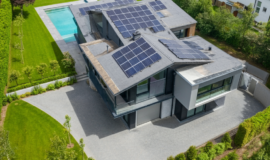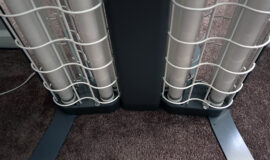Hybrid Solar Lighting
Everybody loves natural lighting. In fact, people spend significant amount of time sitting in gardens, going to the beach and strolling outside to enjoy the natural light outside. While artificial lighting is consumed inside homes and buildings, it would also be great to add natural lighting within the building premises. Simply relying on skylights and windows would only work at houses, but they may not be effective to use in commercial buildings. With this, hybrid lighting has come to life.
What is Hybrid Solar Lighting?
Hybrid Solar Lighting or HSL is a system that automatically lights a room with the combined use of artificial light, in the form of energy-saving fluorescent lamps, and natural daylight channeled in fiber-optic cables on the roof. When it’s very sunny outside, majority of the light will come from natural light. However, in times when there is only little sunlight or none at all, a sensor of photocells will detect the lower light level in the room and will then increase the illumination of artificial lamps to provide artificial light in the room.
With artificial lighting comprising the largest portion of electricity in commercial buildings, hybrid solar lighting is an exciting way to reduce energy consumption while providing additional benefits of natural lighting. Hybrid solar lighting distributes natural light inside the building and fully integrates existing artificial lighting systems. Nevertheless, a building that makes use of hybrid solar lighting enjoy the benefits of natural lighting with the reliability and convenience of artificial lighting.
How Does Hybrid Solar Lighting Work?
Generally, at least one mirror dish, roughly 1m wide, is installed on the roof to collect light from the sun. This is usually bigger than home satellite dishes. Mirror dishes funnel the sunlight through clear and thick plastic fiber-optic rods. Natural light fittings are then coupled to them. The fiber-optic rods and cables used in hybrid solar lighting is different from those used in telecommunications systems in such a way that they are fatter optical fibers as in medical endoscope. They are also made with thick acrylic cores to promote a more efficient transmission of sunlight.
During the day, the mirror dishes rotate to follow the sun across the sky and collect as much sunlight as possible. Approximately, each dish can feed about ten hybrid light fittings, called the luminaries. The incoming light from the roof is combined with the artificial light, making it a hybrid solar light.
Indeed, hybrid solar lighting can be as effective as it can be. Studies show that natural light can increase retail sales, reduce the energy consumption and improve the productivity of the employees. With the innovation of hybrid solar lighting technology, households and businesses can benefit from wellness and greater value of lighting. Aside from that, here has already been a significant interest in using HSL applications for plants and microorganisms as well. Hybrid solar lighting has solved problems in electricity use and with further studies and improvements, this solar technology can potentially do more in the future.






2 Comments